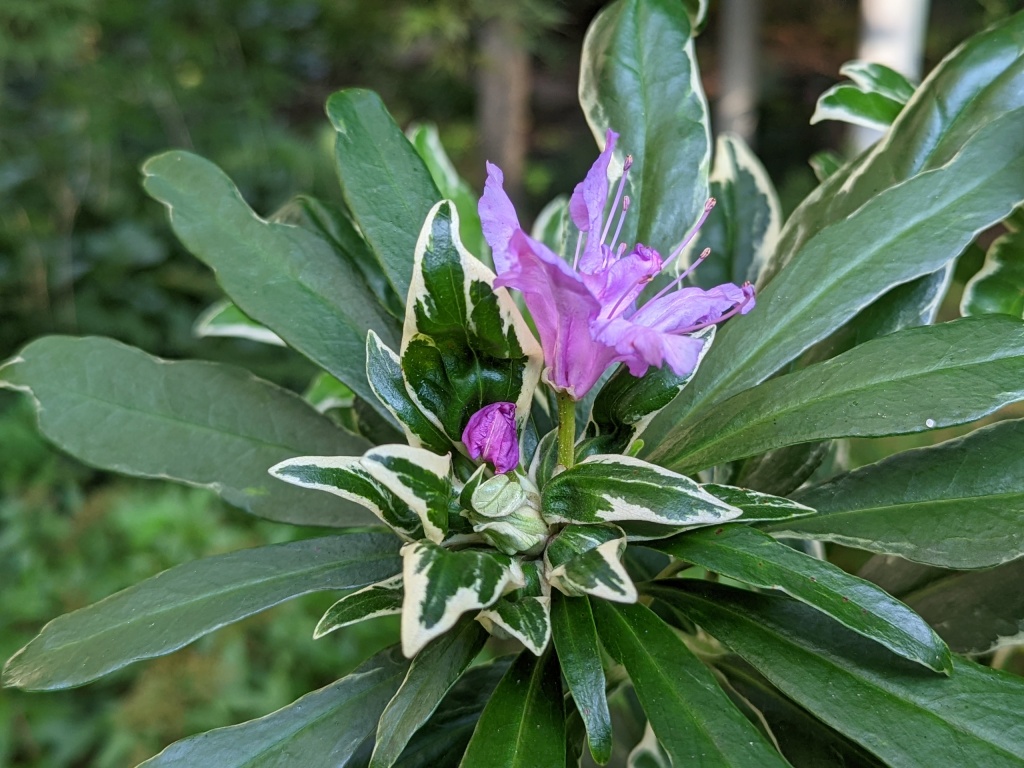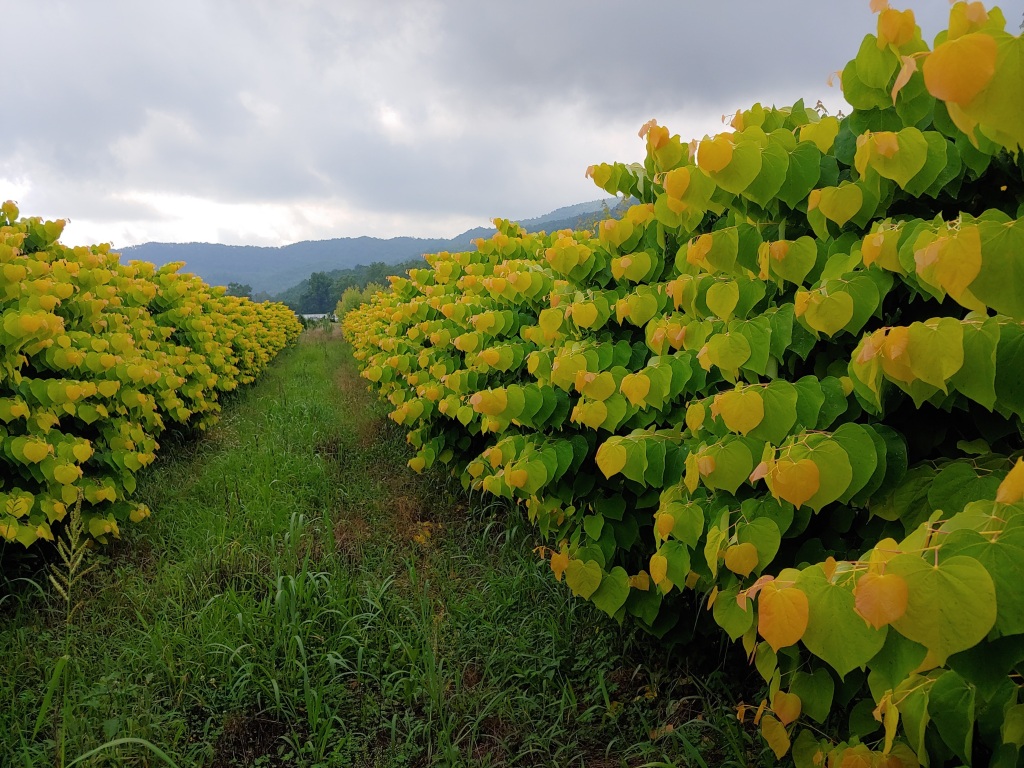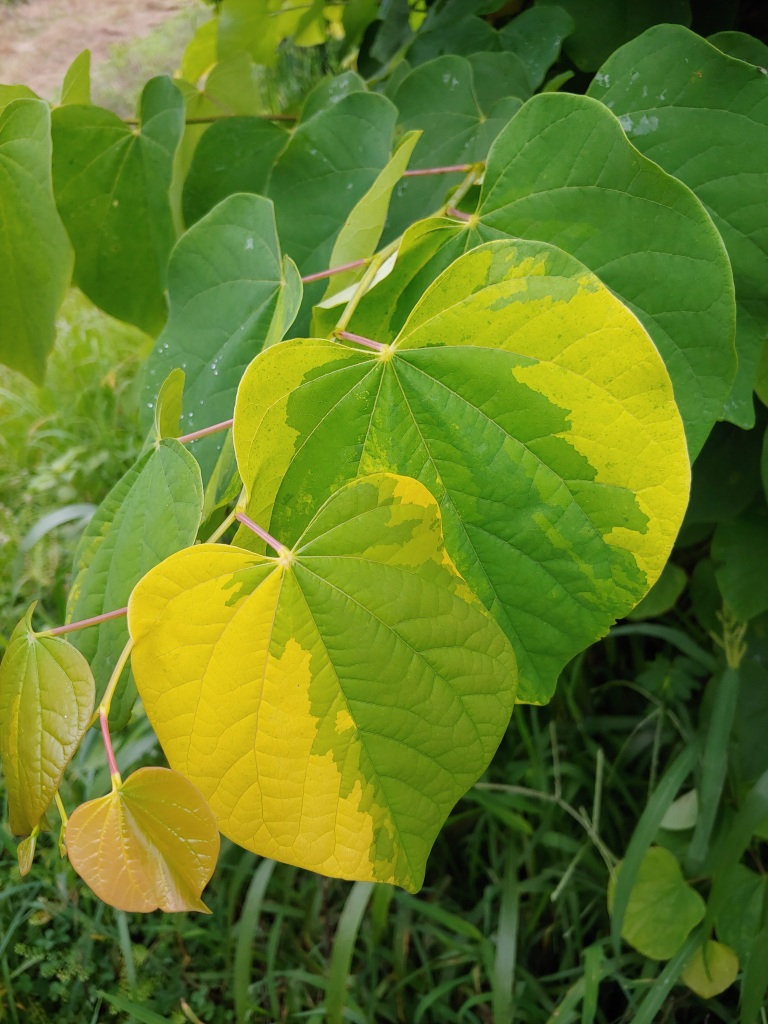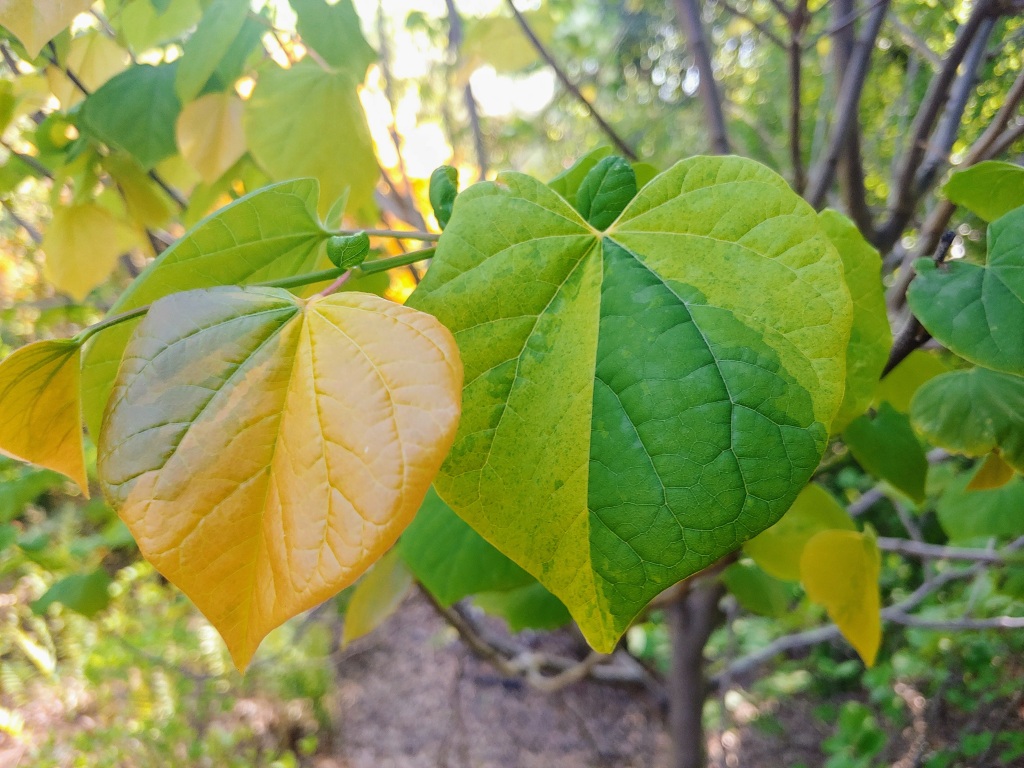Unsurprisingly, after three decades in the garden there remains much to learn. While my intent is to shut out the everyday, to escape from overthinking, every peaceful stroll through the garden reveals new information. Some are merely observations to be enjoyed for the moment. Others provoke thought (a dangerous proposition).

A tall rhododendron outside the kitchen window flowers in October when May is its typical period of bloom. Why? Certainly, I don’t understand the precise sequence of weather events that brings on this out of season flowering, but I’m not surprised that flowering can be stimulated out of season.
I am recently confronted by a larger question. Several years ago, a variegated mutation of ‘Rising Sun’ redbud was spotted as I toured a tree grower in the mountains of North Carolina. Immediately, I expressed interest in obtaining the tree for the garden, so in late autumn it was delivered and planted.

The addition of this unique redbud, with several others already in the garden, inspired a spree over the past two years obtaining a small collection of yellow, red, and even green leafed redbuds. I did not expect the mystery still to come.

Two years later, after experiencing the stresses of a new transplant with smaller than typical leaves, the redbud thrives. But, here the mystery begins. When visiting the field where this redbud was growing a year earlier, all ‘Rising Sun’ were in severe decline. My variegated redbud was the only tree dug from this row of trees.

A discussion ensued about a disease effecting young redbuds, a problem confined to tree growing nurseries only and not in the landscape or in the wild, and the uncertainty regarding its cause. While many questions remain, it seems that the problem is experienced in young trees. It is unclear if the disease begins due to environmental causes such as excess soil moisture, but the question I’ve raised is, why is my redbud still alive when all its neighbors perished? I hope to learn the answer.
Wow, that’s interesting. I’m sure you will keep us informed
I will be following all information from state cooperatives that pass along information. Fortunately, it seems that the problem is evident by the time redbuds reach the 2″ caliper size that is typically when trees are dug for sale. A few tree growers I’ve talked with are holding on growing redbuds until they have more information so they don’t lose entire crops of new trees.
Good morning,
I really enjoy reading your blog – thank-you for sharing your garden experience with your readers. Last spring, before breaking dormancy, I planted a 1 1/2 caliper beautifully shaped “merlot” redbud. Then an arctic blast came, and it barely flowered. In the summer there was a noticeable thinning of the lower leaves. However I’m hopeful because I now see many buds forming all up the tree – it looks healthy during dormancy, good branch color – we’ve had so much rain and a mild winter. Hoping to be rewarded with a stunning show in the spring! I’m wondering now though, because of your article – if there might be something going on with redbuds in general around here. I’m guessing mine probably was grown from the same NC nursery. Anyway, I’m crossing my fingers for both of our redbuds – the “rising sun” is absolutely magical. I’m zone 7A northern VA.
It is not unusual for newly planted trees to show signs of stress as they become adjusted. If the redbud leafs this spring it is likely there is no problem.
Hello, thanks for posting about the redbud. You didn’t mention the flamethrower that (I think) you planted. I lost two old flowering plums and thinking about replacing with flamethrowers. But, I live on the high desert. Different conditions than you. Sometimes it’s a “wait and see” event. Even then, we have our local deer pack that hang out on our city lot, in our yard, and they may have destroyed a Japanese maple, simply by rubbing against it. I’ve always enjoyed them coming through, but I took umbrage this time. (They are still healthy and happy.)
Thanks for the great info. Carla
It appears that the redbud I planted will escape the fate of trees in the North Carolina field. Flamethrower, and other redbuds in the garden are fine.
Why were all the trees still there a year later? Did they start to decline after yours was dug?
When I selected my redbud all trees were fine. It was dug in late autumn, but the grower noticed dieback when preparing for late winter digging. He stopped, and none of the trees leafed fully in spring. By summer most were defoliated. Why did my redbud not suffer this same fate?
Could it be that some sort of nematode proliferated there because of the monoculture, but, even if it came on the roots of your tree, did not proliferate without such an abundance of roots?
Ag extension is trying to determine if it is carried from the liner, or if it is a soil problem. Or, possibly airborne. No answers yet, but this is a major issue in the eastern redbud market. Fortunately, this is confined to tree growers and not a problem for trees in landscapes
That is what makes it so odd, but is also a clue. Some field grown palms deplete particular micronutrients, but it is a slow and obvious process. Redbuds would not do that anyway. Well, I can not tell you anything that you do not already know or have not already considered.